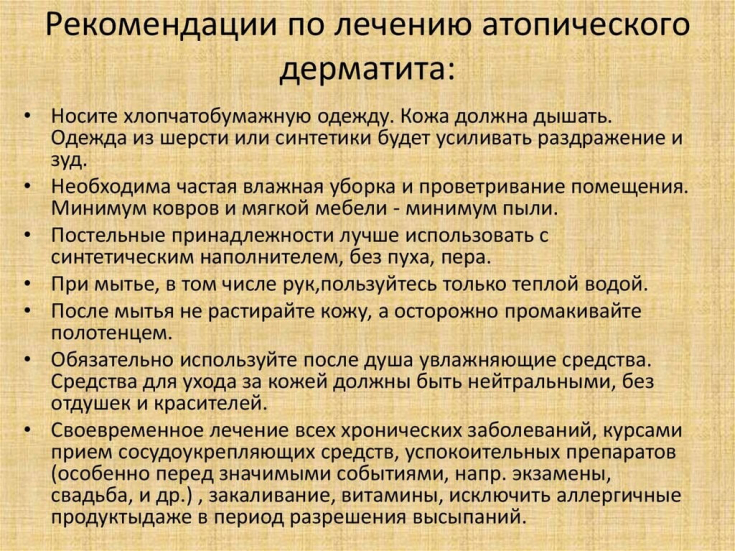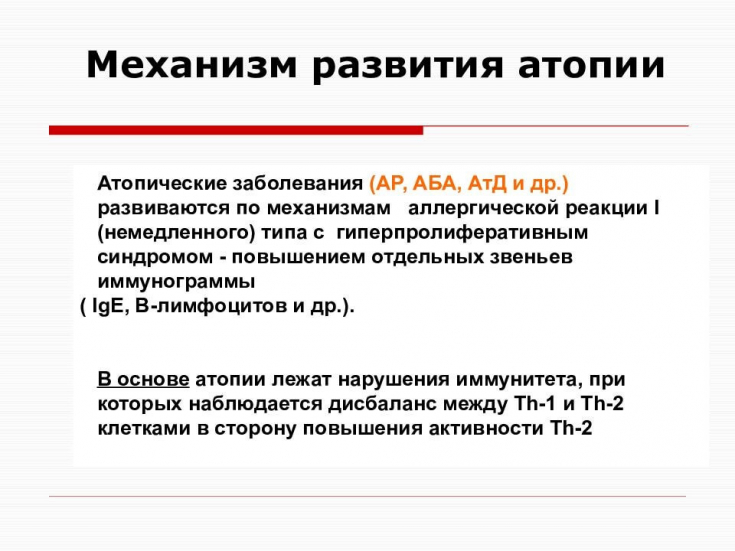Atopic dermatitisoccupies a special place in the structure of allergic diseases, therefore, in this article on estet-portal.com, special attention is paid to the balance of the organization of rational nutrition and adequate care for each individual child, the means and significance of local treatment in the structure of this pathology.
Providing a milestone long-termcomplex treatment is seen as a pledge of long-term remission and prevention of the implementation of the atopic march.
- Atopic dermatitis in the structure of allergic diseases
- Allergens in atopic dermatitis in older age
- The role of prebiotics in dietary nutrition in atopic dermatitiste
Atopic dermatitis occupies a special place in the structure of allergic diseases, because it:
- is one of the most frequent and first manifestations of allergy;
- often transforms later into other forms (bronchial asthma, allergic rhinosinusitis);
- significantly reduces the quality of life of children regardless of age;
- requires long-term and staged treatment and rehabilitation.
Considerable attention is paid to
elimination of causally significant allergens. At the same time, the need for allergy diagnostics is unconditional, which, however, due to objective prerequisites, cannot always be carried out onon.
In such cases, it should be taken into account that food allergens play a significant role in young children (cow's milk protein (79-89%), chicken egg (65-70%), citrus fruits (40-45%), certain varieties of meat and fish (90%).Allergens in atopic dermatitis in older age
At preschool and school age, the importance of food allergy in the pathogenesis of atopic dermatitis decreases, while the role of
inhalation allergens.
Under such circumstances, first of all, adequate phased nutrition is provided, corresponding to the severity of the manifestations of the disease:individual hypoallergenic diet; elimination ration.
At the same time, the sequence of such corrective measures must be maintained at any age − these are either children of the first year of life, or schoolchildren.
Why is xerosis of the skin common among young children?
At the same time, it remains mandatory to provide the child with the amount of proteins, fats, carbohydrates, etc., necessary for age, since this is required by the dynamism of growth and development.It is precisely because of these considerations that
long-term hypoallergenic diet, which limits the intake of important nutrients, has lost its meaning. Children of the first year of life should be fed with breast milk, which is not only optimal nutrition, but also safe in the antigenic aspect, performing «warm immunization».

Despite this, a nursing woman needs to pay special attention to her own diet, removing or limiting foods that have an allergenic effect (food allergens) or stimulate the release of allergic inflammation mediators. At the same time, the composition of food should be varied , full-fledged and do not contain canned or semi-finished products rich in spices and food additives.
Immunological aspects of the development of atopic dermatitis
In the case when the child cannot receive mother's milk, preference should be given tohypoallergenic mixtures in which the antigenicity of the protein component is reduced by special technological processes (heat treatment, enzymatic hydrolysis, ultrafiltration).
In particular, feeding with hypoallergenic mixturesprotects the baby from additional sensitization by cow's milk protein − the basis of most breast milk substitutes because they contain hydrolysed whey protein.
Cleavage of protein molecules to peptides with a shorter chain length helps to reduce the antigenic properties of the protein component, facilitates penetration through the intestinal wallThe role of prebiotics in dietary nutrition in atopic dermatitisAt the same time, hypoallergenic mixtures may contain
prebiotic fibers (galacto- and fructozooligosaccharides), which have a bifidogenic effect (stimulate the growth of the child’s own bifidoflora) or contain live bacteria involved in parietal digestion and restoration of intestinal mucosal barrier functions, thereby reducing the likelihood of allergic reactions.

With such nutrition, the child receives not only a decrease in the manifestations of allergic reactions, but also the activation of natural mechanisms of detoxification and immune resistance.
However, in severe cases of atopic dermatitis, preference is given to
treatment mixtures based on moderate protein hydrolyzate, which ensures that animal protein sensitization is avoided.
Basic approaches to the treatment of atopic dermatitis
For children over one year of age, treatment begins withhypoallergenic nutrition and obligatory food diary in order to switch to a elimination diet (withdrawal of only specific foods with allergenic ability for the patient).
Probably not the most difficult, but crucial step −expansion of the range of food. They switch to it with persistent remission of the skin syndrome, starting with the frequency of taking new products 1 time per week, then − 1 time in 3 days, but eat if the food is well tolerated.
More useful and interesting information on our channel on YouTube:







Add a comment